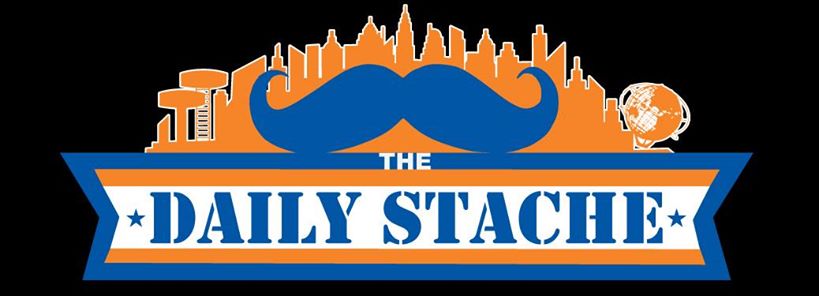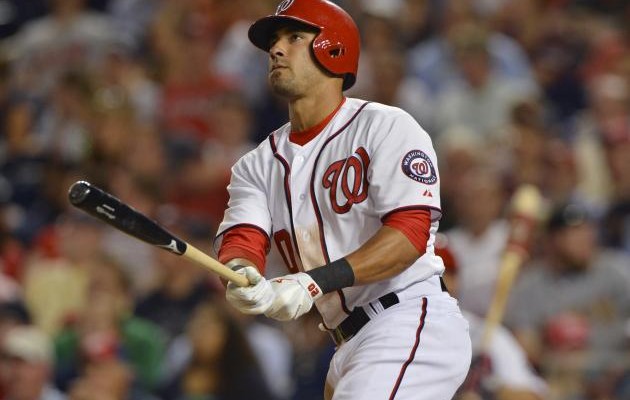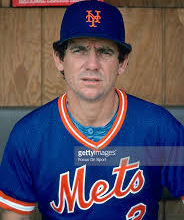Ian Desmond made a questionable decision in 2014 when he turned down the Nationals $100 million dollar offer.
Desmond was coming off his third straight 20 plus HR and 70 plus RBI season. This put the magnifying glass on Desmond’s performance for 2015. Any success or failure was measured heavily by the league’s GMs and scouts. Desmond was making a statement that he was worth much more than the price tag by the Nationals. Unfortunately for Desmond, 2015 got off to a terrible start and did not improve much down the stretch. As Desmond struggled, so did the Nationals. As off-season favorites to win the World Series, they failed to make the playoffs. Desmond’s offensive and defensive abilities were put to the test and Desmond proved he is not going to be making $100 million in his next contract.
Defense has never been a strong point for Desmond, but 2015 revealed his weaknesses. Desmond finished the season with 27 errors. The arm strength has been average and inaccurate throughout his career. Desmond fails to make the deep throw from the hole, and any attempt usually takes one to two hops before reaching first base. Although graceful, Desmond is capable of making the plays laterally. The footwork does not put him in the best mechanical positioning to make accurate throws when going to his left. With all that said, Desmond has above average athleticism which allows him to make the harder plays. The routine plays are what have caused trouble in recent seasons. This season began and ended with many defensive blunders on routine ground balls and pop ups. Ideally Desmond will project better at second base down the road, but for now he is still adequate at shortstop. On the right team, Desmond could bring desperately needed stability to shortstop.
Offensively, Desmond provides plus power from a defensive position. Desmond is a consistent 20 HR player with the potential to reach 25 HR. Another useful tool is Desmond’s ability to steal 20 bases. Desmond’s power is typically to left field and occasionally to centerfield. Desmond’s career spray chart translates to 10-15 HRs to right field. The inside pitch is what Desmond looks to attack and pull. His hands are quick to the zone on the inside pitch, but tends to sell out his lower half. The majority of Desmond’s lazy pop ups are to right field from his lower half opening up and missing the good part of the bat. When Desmond gets his hits, he gets a solid part of the barrel. The outside pitch does not allow him to drive the ball, which can cause some streaky weeks.
Last season Desmond made $11 million. In 2015-16 that would put Desmond making top 10 shortstop money. Desmond will be compared to contracts the likes of JJ Hardy and Johnny Peralta. Being a few years younger, Desmond will command more years than Hardy and Peralta. The average annual salary around $12.5-$13 will be similar to what Desmond will require. For five years with a sixth year option, Desmond would gain the stability and salary deserved for a player of his strengths. Many experts believe Desmond is due for a bounce back year after allowing the pressure of a contract season get to him. Whether this is true or not, Desmond still can produce power protection in any lineup.
As far as the Mets and Desmond relate, he would be a significant upgrade at the position. However, the money and years may not match up with the Mets budget. The shortstop position has been a revolving door since the departure of Jose Reyes. It would be smart to solidify the position with an everyday player like Desmond. Desmond is younger than Zobrist, who is rumored to be the Mets top target. Signing Desmond over Zobrist would be worth paying extra and allowing Flores and Herrera to develop into the everyday second baseman. Having played in the NL East his entire career, Desmond would not need much adjustment to the pitching and parks. With Lucas Duda being a streaky HR hitter, Desmond would provide a good right handed protection for Duda. At some point in the near future, the Mets will need to solidify the infield positions and get away from platoons. This pitching staff requires the run support it deserves in the years ahead.




